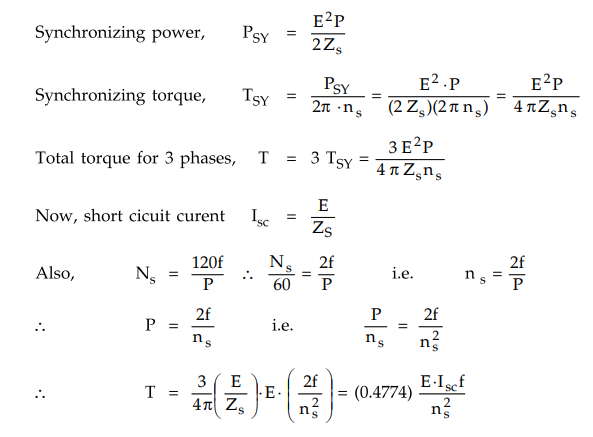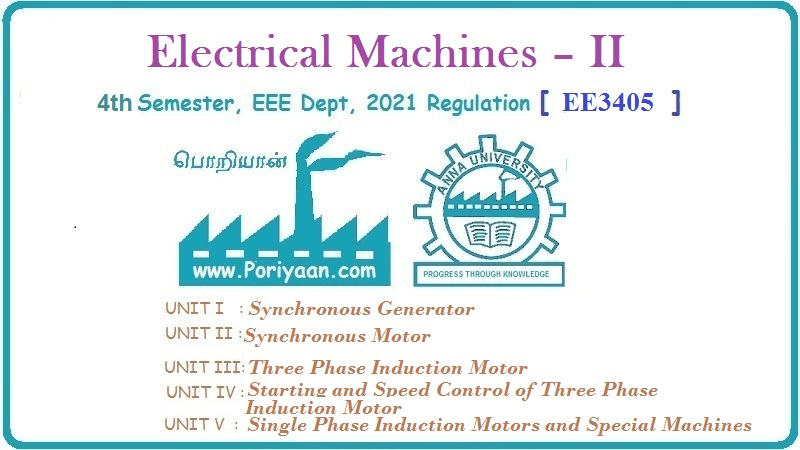Electrical Machines II: UNIT II: Synchronous Motor
Time Period of Oscillation
Synchronous Motor
There may be swinging of machine due to variations in load or due to any other reason.
Time Period of Oscillation
The
synchronous machines are associated with free oscillations having some natural
time period. There may be swinging of machine due to variations in load or due
to any other reason. If the time period of these oscillations coincide with
natural time period of the machine then there may be higher amplitude of
oscillations which may pull the synchronous machine out of synchronism.
Let
us derive the expression for time period for these oscillations.
Let PSY = Synchronizing power per
phase
TSY
= Synchronizing torque per phase, E = Induced e.m.f. per phase
Zs
= Synchronous Impedance, Ns =
Synchronous speed in r.p.m.
ns
= Synchronous speed in r.p.s.,
P
= No. of poles
ɑ
= Angle of swing by an alternator in electrical radian
The
synchronizing power developed is given by,
PSY
= ɑ E2 / ZS = E2 / ZS per elecrical
radian per phase
We
have, 1 electrical radian = P/2 × mechanical radian
For
mechanical radian displacement,

The
period of undamped free oscillations is given by,
t
= 2π √
J/T
Here,
J = Moment of Inertia in kg-m2
Substituting
value of T obtained in above expression,

Here
kVA is full load kVA rating of an alternator.
If
synchronous speed is expressed in rpm, then time t in seconds is given by

Review Question
1. Derive the expression for the time period of oscillations in
a synchronous machine.
Electrical Machines II: UNIT II: Synchronous Motor : Tag: Engineering Electrical Machines - II : Synchronous Motor - Time Period of Oscillation
Related Topics
Related Subjects
Electrical Machines II
EE3405 Machine 2 EM 2 4th Semester EEE Dept | 2021 Regulation | 4th Semester EEE Dept 2021 Regulation
